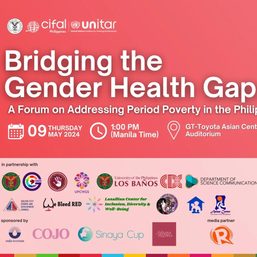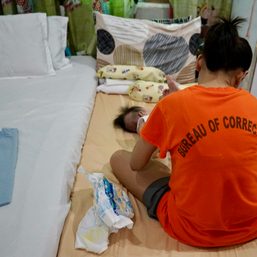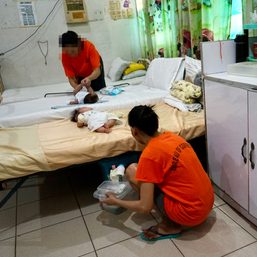SUMMARY
This is AI generated summarization, which may have errors. For context, always refer to the full article.

MANILA, Philippines – Despite fears that unintended pregnancies would rise amid pandemic lockdowns, the Philippines was able to avert 200,000 possible unintended pregnancies in 2020. It did so by continuing to provide family planning services, the Commission on Population and Development (PopCom) reported on Wednesday, June 8.
In the Philippine launch of the 2022 State of World Population (SWOP) report, the PopCom mentioned a 2020 report from the University of the Philippines Population Institute (UPPI) and the United Nations Population Fund (UNFPA) that anticipated an increase in unintended pregnancies by 751,000 in 2020 if there were no family planning services available during a total lockdown in the country for 9.5 months.
Since total lockdown or enhanced community quarantine was limited mostly to Luzon and lasted three to four months, the PopCom lowered the calculation to 200,000 possible unintended pregnancies in 2020. “We averted that,” PopCom executive director Juan Antonio Perez III said on Wednesday.
“We averted that just by mobilizing local government units and mobilizing community workers, because they were the key during the COVID era. They would go house-to-house and deliver pills and condoms to family planning users. And we tried to keep our clinics open at all levels. We avoided a downturn in family planning services,” he said.
Total pregnancies in the Philippines were reported to be on a downward trend since 2019, PopCom said, citing data from the Philippine Statistics Authority. From 2019’s 1.67 million births, there was an 8.3% decrease to 1.53 million in 2020. Then, in 2021, total births saw a 14.7% decrease down to 1.3 million.
Modern family planning users were also reported at their highest since 2000, with more than 8 million users in 2020.
Meanwhile, according to the 2022 SWOP, the Philippines ranked 56th out of 150 countries in the number of unintended pregnancies at 71 per 1,000 women annually. Thirty-six in every 1,000 Filipino girls aged 15 to 19 had already given birth between 2004 and 2020.
Even with the thousands of unintended pregnancies averted, authorities and the UNFPA continued to sound the alarm over the work that still needed to be done.
“Even our economic managers had dubbed adolescent pregnancy as a ‘national social emergency.’ Yet the latest SWOP report reveals that the Philippines has yet to fully untangle the several complex layers of this issue that exacerbate the situation,” said Romeo Dongeto, executive director of the Philippine Legislators’ Committee on Population and Development (PLCPD).
Leila Joudane, UNFPA country representative, said that unintended pregnancies still happen “despite a woman’s best efforts.”
“It happens usually as a result of unequal social and economic conditions that women face,” Joudane said, noting that women in countries with more equality, empowerment, and financial resources are better able to avoid unintended pregnancies.
Perez said the government would launch a “heightened, multi-pronged campaign” to address unintended pregnancies in the country. The campaign would focus on reducing gender inequality, guaranteeing access to reproductive healthcare, educating young people about sexuality and reproduction, and increasing access to education and employment opportunities.
On May 28, the International Day of Action for Women’s Health, advocates also renewed calls for the incoming administration to ensure better access to women’s healthcare. International nongovernmental organization Women’s Global Network for Reproductive Rights called on governments in general to recognize sexual and reproductive health rights as essential in post-pandemic recovery. – Rappler.com
Add a comment
How does this make you feel?


![[Rappler’s Best] US does propaganda? Of course.](https://www.rappler.com/tachyon/2024/06/US-does-propaganda-Of-course-june-17-2024.jpg?resize=257%2C257&crop=236px%2C0px%2C720px%2C720px)







![[Dash of SAS] Making abortion a constitutional right](https://www.rappler.com/tachyon/2024/03/Its_true_-_Flickr_-_Josh_Parrish-1.jpg?resize=257%2C257&crop=125px%2C0px%2C768px%2C768px)
There are no comments yet. Add your comment to start the conversation.